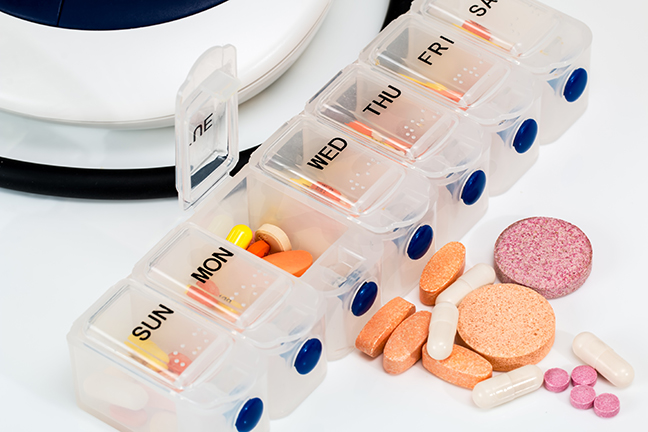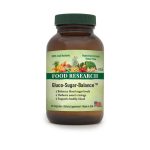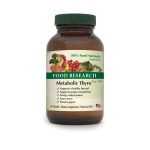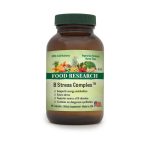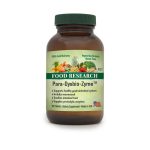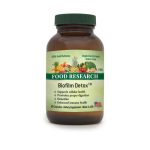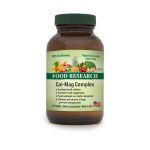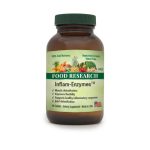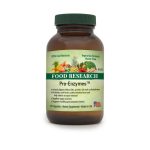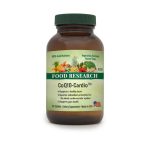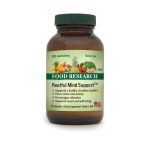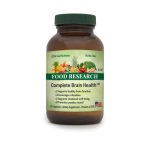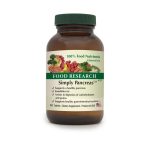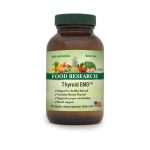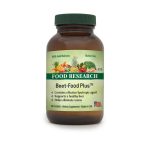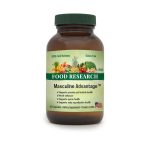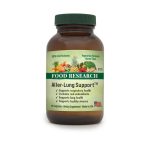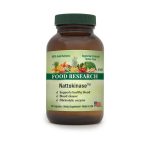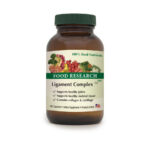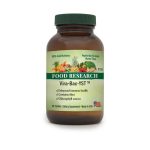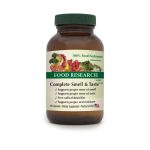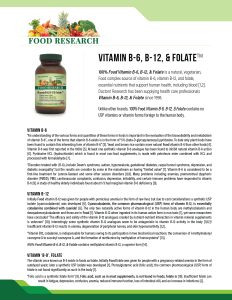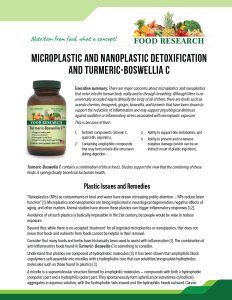If you have read this far, you probably have already asked yourself that question. Instead of me trying to answer that, I felt it might be helpful to know that this question was raised a half-century ago. To answer it, Dr. Royal Lee, in 1948, wrote the following paper which he titled, How and Why are Synthetic Poisons Sold as Imitations of Natural Foods and Drugs?, “
An honestly enforced food and drug law is just as essential to the proper operation of commerce in foods and drugs as the rules and an umpire to administer them in a ball game.
It is obvious to all that such a law should stop the sale of poisonous imitations of common foods and drugs, except where proper labeling warns the buyer of just what he is getting, New synthetic products are constantly appearing, and are sold without proper tests or proper investigation of what their real proper‑ties are.
In fact, the Food & Drug laws seem to be suspended where synthetic imitations of good foods are concerned, and often actually perverted to persecute makers and sellers of real products, as we shall later show.
Let us first get to the bottom of this question of how synthetic products differ from natural. There are two ways in which a difference may exist:
a. The synthetic product may not be the same thing, but something that resembles the natural product.
b. The synthetic product is always a simple chemical substance, while the natural is a complex mixture of related and similar materials.
The first situation, where the synthetic material is not the same thing, is common. Take lactic acid, originally made from sour milk, now made synthetically in large quantities. The sour milk lactic‑acid consisted entirely of molecules that were of a right‑handed character. The synthetic is a mixture of equal parts of right‑handed molecules (dextro‑lactic acid) and left-handed molecules (laevo‑lactic acid). Such mixtures are known as racemic compounds. (In catalogs, etc., the prefixes I‑, d‑, or r‑, are used before the name of the substance.)
About thirty years ago, Dr. Crofton, an English endocrinologist explained how digestive enzymes could only act upon part of the food available. Here are his words:
“It will not be unprofitable now to inquire into the raison d’etre of this curious adaptor mechanism. How is it that the ferments of the tissue‑cells themselves cannot deal with the comparatively simple food material presented to them without the aid of adapters?
Pasteur first discovered that there are certain compounds of carbon which, while identical in every other respect having the same chemical formulae and the same chemical reactions differ only in their behavior to polarized light, that is one compound rotated the light to the right, the other to the left. Such compounds have the same specific gravity, molecular volume melting point, solubility, heat of solution, of combustion and of neutralization. They have the same amount of chemical affinity and index of refraction. Their absorption spectra are the same, and they have the same chemical action, yet one body rotates the light to the right as much as the other to the left. Pasteur’s discovery was made with ammonium tartrates, and he found that if the common mould penicillium glaucum was made to grow in a solution of both (ammonium racemate) it lived on the dextro‑isomer but left the levo‑salt, as he thought, quite untouched, But it now appears it is broken up to a small extent.”[1] (This requirement of the living cell for a minute amount of the laevo‑salt, and the reason for their requirement for the major amount to be the dextro‑ form is explained by Lee and Hanson in their discussion of cell reactions in their book, “Protomorphology”, 1947, Lee Foundation [2].)
Few people know that dextro‑lactic acid is a food and laevo‑lactic acid is a poison. (One is converted into sugar in digestion, the other is a waste product.) Lactic acid once was found useful as a source of carbohydrate as a milk modifier for babies., and began to get into use in special cases where sugars were not well tolerated. In Halifax, some time ago, a number of babies died from the administration of lactic acid in milk, and here was a case where the synthetic product was inadvertently used in place of the natural, because of inadequate labeling precautions. [3] The doctors who recommended its use probably did not even know that there was a difference between the synthetic and natural lactic acid, although the drug catalog of Eli Lilly and Company of 1938, page 195, offers some information on the subject. The basic trouble is that the makers of synthetic products do not want a stigma of inferiority to be put on their imitation products, and will not label their imitations as different unless forced by conscientious food and drug inspectors to do so. And it is a notorious fact that the law is being ignored in many ways.
Where a food product must be composed of, say right‑handed molecules, the left‑hand may be as useless as in the case of left and right hand bolts and nuts in machinery. If you needed right hand cap screws to put the head of your auto engine back on, left hand screws would only serve to cause confusion and probably a failure to get the machine back into operation, unless you could find among them enough of the right screws to finish the job. To feed racemic or wrong “handed” food products is just as foolish. In the case of the babies in Halifax it caused death to feed the racemic product.
In 1895 Paul Walden, of the University of Rostock, (Germany), announced his discovery of the ‘Walden Effect,” the phenomena of the alteration of the optical inversion of natural organic substances that had been isolated M‑ crystal purity, over a period of time, apparently a result of removal from their normal environment and association with other protective and colloidal factors.
Walden, in a series of lectures at Cornell University, (1927‑28), stated:
“The phenomenon of autoracemization is of interest in connection with the question of permanency of optically active substances. Let us consider a pure organic substance such as the dextrorotatory bromo‑succinic ester. When it is kept for some time in a closed flask at ordinary temperatures, it undergoes spontaneous intramolecular rearrangement and a gradual decrease of the optical rotation results; in other words, it racemizes. Several examples may be cited to illustrate this remarkable fact…Might we
not speak of ‘dying molecules’ much as we speak of ‘dead catalysts’?… The effect of
these reactions is, as we may express it, a complete turning ‘inside out’ of the molecule.”
Dr. Emil Fischer, in 1906, said:
“This discovery is the most surprising observation in the field of optically active substances since the fundamental investigations of Pasteur.”
Amino acids are also useless if not toxic when present in synthetic forms. only left handed (laevo‑) amino acids can be assimilated. All synthetic aminos are racemic.
Adrenalin is an outstanding example of a synthetic product that is being commercialized in disregard of the difference in physiological action. The natural adrenalin is fifteen times as 35 active as the synthetic dextro form [4] in its effect on blood vessels, while the dextroadrenalin is eighteen times as effective in promoting glycosuria.
Now, since the commonest use of adrenalin is to promote the vascular changes that relieve the asthmatic patient, the glycosuria (diabetes promoting) effect is definitely not wanted. But to get the same vascular effect, 15 x 18 or 270 times as much of the synthetic stuff must be used, in terms of its unwanted effect of putting sugar into the urine.[5]
The cost of calling a doctor and of getting a shot of adrenalin by the asthmatic patient when he is struggling for a breath of air is far too much to offset the two‑cent saving made by the pharmaceutical manufacturer who puts synthetic adrenalin in the ampule used by that doctor. But, if neither the doctor or the patient knows the difference, the synthetic stuff certainly win be the one he gets. Although natural adrenalin can be made as a by‑product in the processing of glands in making adreno‑cortin, makers of this material tell us there is no market for natural adrenalin because of the low price of the synthetic product.
Pantothenic acid is a vitamin now commercially available only in the synthetic form. Probably this is the reason for its effect of causing a loss of sex function, particularly in females. This castrating action has been found both in test animals and in human patients receiving the “vitamin”, according to unpublished reports to us.
Pure natural Vitamin E was found three times as potent as pure synthetic Vitamin E.[6]
Of course, the poisonous nature of the synthetic Vitamin D sold as “Viosterol” and “Vigantol” is well established. It causes blood in the urine very quickly in children, by its destructive action to the kidneys. Deaths have been reported from the ordinary dosages used to “protect” from rickets. [7]
WHY DO NOT THE PEOPLE AND MEDICAL MEN KNOW THESE FACTS? Is it because the commercial promoters of cheap imitation food and drug products spend enough money to stop the leaking out of information?
Here is a good example of how hard it is to get the facts. In “Good Housekeeping” for September, 1943, in the “Question Box”‘ department, the question was asked, “Are synthetic vitamins as beneficial as those from food sources?” The answer was made “Manufactured vitamins are identical with those found in foods. They are just as beneficial.
When asked what references they could offer to substantiate that statement, “Good Housekeeping quoted the journal of the American Medical Association, December . 21, 1940, page 2185: ‘There is no detectable difference between the synthetic chemical vitamin and the natural ones. Ascorbic acid is just as good Vitamin C as one gets from an orange.”
When pressed for actual experimental evidence instead of swivel chair opinions, the Editor of “Good Housekeeping” referred the question to a group of “experts.” Here are their opinions:
Dr. E. V. McCollum of Johns Hopkins:”…each and every one of these synthetic vitamins is identical with the natural product.”
Dr. Henry C. Sherman, Columbia University: “In some cases the natural and synthetic forms seem to be identical while in other cases there may be more than one natural or more than one synthetic form.” When asked for factual evidence from experimental work to prove that the synthetic vitamins in “enriched” flour, were equal to the natural, he replied, “I think any answers that a scientific worker would give you would be based upon facts and that nothing would be gained by spending time on library researches in order to attach specific references to our answers.”
Dr. George R. Cowgill, Yale University School of Medicine: “In answering the question raised in your letter about relative values of synthetic as compared with “natural” vitamins one should keep clearly in mind the meaning of the terms involved. There is no difference between these two sources of the vitamins as such. However, in many nutritional experiments one works with highly artificial diets containing the synthetic vitamins and there is no supply of various unknown factors that are needed for nutrition. If these unknown factors are missing, obviously some malnutrition will result, but it seems clear in this situation that one is not thereby justified in concluding that the synthetic vitamins are inferior to the “natural” vitamins”.
“This is the position taken by most of the authorities in the vitamin field. Thiamine as thiamine will meet the body’s needs for this vitamin whether it is the synthetic variety or if it comes as a part of a food like a whole‑grain breakfast food. The natural food, of course, may contain the unknown factors that are missing from a specific mixture of vitamins, and therefore, be superior to this extent.”
(Dr. Cowgill was not aware of the fact that natural thiamine can not be separated from B4, the vitamin that prevents some kinds of heart disease.[8] Therefore, it is impossible to compare natural thiamine with synthetic thiamine. He is comparing the synthetic B1 to a product purely hypothetical that is not known to science, not available for tests.)
We also obtained the opinion of Dr. S. Ansbacher, U. S. Vitamin Corporation, New York: “There is no difference whatsoever in the physiological activity of vitamins from natural sources and the ones made synthetically.”
(Dr. Ansbacher here differs from a book his own firm published, “Vitamin and Mineral Therapy,” by H. E. Dubin and Casimir Funk, 1936, (Dr. Funk was the discoverer of Vitamin B and the man who invented the word “vitamin.”), in which is the comment: “Synthetic Vitamins: These are highly inferior to vitamins from natural sources, also, the synthetic product is well known to be far more toxic.” Page 65)
Dr. Funk’s opinion is significantly different from that of Dr. Ansbacher, present Research Director of the company. Why is it that none of these men seem able to refer to any concrete reason for their present opinions? Could it be that the profits involved in the sale of synthetic foods and drugs are so great that there is a constant campaign on to cover up the facts?
In the September 1948 issue of “Reader’s Digest” is an article by Paul de Kruff, “Harry Steenbock Trapped the Sun,” that appears to be for the express purpose of reviving the reputation of Steenbock and Viosterol the synthetic and poisonous form of Vitamin D. Aside from the dangerous nature of Steenbock’s vitamin, its promotion by the Wisconsin Alumni Research Foundation was an unconscionable racket. its nature is well exposed in the appended reprint from “This Month,” June 1945…
Viosterol is still on the market. It will still poison your child if YOU do not watch out. Your doctor has not yet been informed by his medical society, (if he is a member of the A. M. A.), that they made a mistake in approving it as real Vitamin D, although all vitamin authorities, including Steenbock himself, who first published the fact, knows that Viosterol is NOT Vitamin D. [9]
The same issue of “Reader’s Digest” carries an article on the nickel‑cadmium storage battery, a
common article in Europe for the last 40 years. it is completely unknown in this country.
WHY? Simply because the American makers of lead storage batteries have succeeded in
keeping out any knowledge of this battery from all American territories, and have stopped any
production in this country by hook or crook, (as the article tells it, by acquiring control of the
European concerns), all to protect their racket of selling a short‑lived battery to their customers text books ignore the cadmium battery.
In Canada the adulteration of white flour with synthetic vitamins is a criminal offense. In this country it is an approved practice, and the makers of synthetic vitamins reap a fat harvest for their contribution to the advertising propaganda of the flour millers. The real vitamins are removed to keep insects and molds out of the flour. Synthetic vitamins are added to fool the public, which knows that white flour without vitamins is unfit to eat. The fact that insects and molds still can not live in the flour any better than before the synthetic vitamins were added is not mentioned. Neither is the fact mentioned that test animals fed enriched” diets, (“enriched” with synthetic imitations of natural vitamins), DIE SOONER than control animals fed the deficient diets. Proof that synthetic vitamins are worse than none as food fortifiers, [10], proof that they are put into foods to defraud the buyers, cheat him out of his health and life, as well as his money.
This situation cannot be an accident. It must be a carefully planned conspiracy, with varying degrees of guilt for all the pseudo‑ scientists who have varying degrees of knowledge of the real situation, and who do not dare to expose the truth.
Food & Drug Inspectors and Officials are as helpless to combat this overwhelming influence as they would be to stop the sale of bootleg whiskey during prohibition days. To keep their jobs they have to keep one eye shut.
Dr. Harvey W. Wiley, the first head of the Federal Food & Drug Department tried to stop the use of synthetic sugar, known as glucose of com sugar, in preserved fruits and canned goods. He felt that it was a fraudulent practice to load up such foods with synthetic materials of unknown effect on the human body. Further, people eat sugar as a sweetener, and the synthetic sugar was far less sweet than cane sugar, and would have to eat much more to get the same taste when added to preserves, etc. Dr. Wiley lost out in his desire to even get the label warning on containers that the product carried synthetic sugar, in fact, lost his job because he tried to protect the public.
Only this year have supporting tests confirmed Dr. Wiley’s fears. On May 10, 1948, the University of Pennsylvania released the news to the Associated Press that they had found that the feeding of glucose to test animals caused diabetes. (Dr. Francis D. W. Lukens and Dr.
F. Curtis Dohan.)
Dr. Wiley thought that glucose was a possible cause of diabetes, but had no way to prove it. He felt that the makers of glucose should not be permitted to experiment on the whole population of the United States to find out.
It is the use of glucose in candy, soft drinks, bakery goods, ice cream, canned fruit etc., the low price of which enables their users to undersell all competitors who may try to use better sugars, and put them out of business. It is a clear case of where the public SHOULD be protected by a law, but, as Dr. Wiley said when he was forced to leave his job “thus the very law which the Supreme Court has said was enacted chiefly to protect the public health has
been turned into a measure to threaten public health and to defraud the purchaser of flour.
When you add up the industries that depend upon their foisting of synthetics as foods alone, (not considering drugs), you will find you have a list of the biggest in the country. Naturally, they are watching all loopholes where their rackets might start to crack. It is probably impossible for any research worker operating under the auspices of a university or in a government laboratory to be free from their indirect influence, Such items as have been quoted here are leaks that have commonly been quickly suppressed. No further work is done on these important questions. If a book like Dr. Daniel W. Quigley’s, “The National Malnutrition which exposes these food racketeers, gets into public libraries, these influences get it off the shelves. This happened at Rochester, New York, where twelve of the Quigley books were donated by request, for the library and its branches. Later, when it was found that the books had been taken off the circulating list, the librarian admitted that no book inimical to local, industries could remain on the library shelves. Later, that same librarian was Written up in the local paper as a “Champion of FREE libraries where no outside influence could alter the nature of the “free speech” of the library. (Rochester Democrat & Chronicle, November 21, 1944.) Was this a deliberate attempt to nullify a truth by circulating a lie? Or, maybe just a coincidence.
The Food & Drug Administration, and the Federal Trade Commission, instead of getting the facts in this situation and protecting the public against these dangerous imitations of natural foods, are bending their energies it seems to cover up for the racketeers.
We cannot find a single instance of where a maker of synthetic imitation vitamins has been prosecuted by the Food & Drug Administration for improper claims on his labels or advertising. But many makers of NATURAL products have been prosecuted for making claims IDENTICAL to what the makers of synthetic products are constantly and continually promoting. WHY THE SELECTION OF THE MAKERS OF NATURAL PRODUCTS FOR PERSECUTION? In one case in which we have the transcript at hand, the prosecuting attorney was successful in getting the testimony of a key witness REVERSED in the process of printing the record, which the Court of Appeals was able to use to support their argument to uphold the original judgment Without this help, it is hard to see where the original verdict could have been sustained, obtained as it was by obvious fraud, where Government “experts” declared no, vitamin deficiency could create either a degenerative, infectious, or a functional disease.
The Federal Trade Commission has issued orders and interpretations to makers of natural vitamins to “cease and desist” stating that a synthetic vitamin is in any way inferior to a natural.
Pages could be filled with examples of misuse of authority of this kind, where special business interests are being protected by police activity. If one asks the question, “Why do they prosecute one concern for a violation, and then let far bigger ones continue to use the prohibited advertising‑‑if it is wrong for one to make a statement why is it not wrong for another? The answer you get is “action can only be taken where a complaint is made, no one has filed a complaint against these concerns.”
If a police authority can stop a murderer only after someone files a complaint, lets get busy and start filing complaints. For a lot of people are being murdered, slowly maybe in most cases, but none the less surely, by food racketeers, who are constantly finding ways to make a poor product worse, and sell it for less, thereby driving better ones off the market. On top of this, they are using the police power to stop the maker of better products from telling the truth on his label as to the difference.
Just WHY should the TRUTH be subservient to the OPINIONS of hired crooks who sell their reputations as EXPERT WITNESSES?
Can you imagine a better way to protect racketeers under the Federal laws? Or a better way for them to discredit their competitors? ”[12]
References (These references are listed the same way that Royal Lee listed them)
[1] Crofton, W. M.: AN OUTLINE OF ENDOCRINOLOGY. Wm. Wood and Company, New York,
Second Edition, 1929.
]2] Lee, R. and W. A. Hanson: PROTOMORPHOLOGY. Lee Foundation for Nutritional Research,, Milwaukee, Wisconsin, 1947.
[3] Young, E. G. and R. P. Smith: LACTIC ACID: A CORROSIVE POISON. Journal of American Medical Association 125:1179‑1181) 1944.
[4] Harrow and Sherman: THE CHEMISTRY OF THE HORMONES. Williams & Wilkins, Baltimore, Maryland, page 122, 1934.
[5] Dyson: THE CHEMISTRY OF CHEMOTHERAPY. The Chemical Publishing Company, Brooklyn, New York, page 66.
[6] THE RELATIVE ACTIVITY OF NATURAL AND SYNTHETIC VITAMIN E. Nutrition Reviews 5:251‑253,1947.
[7] Bauer, J. M. and R. H. Freyberg: VITAMIN D INTOXICATION WITH METASTATIC CALCIFICATION. Journal of American Medical Association 130:1208‑1215,1946.
[8] Stepp, W., Kuhnau, J. and H. Schroeder: THE VITAMINS AND THEIR CLINICAL APPLICATIONS. English translation published by The Vitamin Products Company, Milwaukee, Wisconsin, page 24, 1938
[9] Steenbock, H., Kletzein, S. N. F. and J. G. Halpin: THE REACTION OF THE CHICKEN TO IRRADIATED ERGOSTEROL AND IRRADIATED YEAST AS CONTRASTED WITH THE NATURAL VITAMIN D OF FISH LIVER OIL. Journal of Biological Chemistry 97:249,1932.
DeSanctis, A. and J. D. Craig: A FIVE‑YEAR CLINICAL STUDY OF THE PROPHYLACTIC VALUE OFANTIRACHITIC AGENTS. New York journal of Medicine 34:712‑714,1934.
[10] Morgan, Agnes Fay: THE EFFECT OF IMBALANCE IN THE “FILTRATE FRACTION” OF THE VITAMIN B COMPLEX IN DOGS. Science page 261, March 14,1941.
[11] Wiley, H. W.: THE HISTORY OF A CRIME AGAINST THE PURE FOOD LAW. Published by himself, page 391, 1929.
[12] Lee R. How and Why Synthetic Poisons are Sold as Imitations of Natural Foods and Drugs. Lee Foundation for Nutritional Research, Milwaukee, 1948
The above is an excerpt written by Royal Lee and from the book, Serious Nutrition: Incorporating Clinically Effective Nutrition Into Your Practice.
Royal Lee, in addition:
The late Dr. Royal Lee knew that food vitamins were superior to synthetic ones.
For another example, Dr. Royal Lee felt that food vitamin C was superior to ascorbic acid. “Dr. Lee felt it was not honest to use the name ‘vitamin C’ for ascorbic acid. That term ‘should be reserved for the vitamin C COMPLEX'” [DeCava, J. The Lee Philosophy-Part II. Nutrition News and Views 2003;7(1):1-6].
Why then, according to the ingredients listed in a recent catalog, would a supplement company that Dr. Lee originally founded currently include ascorbic acid, inorganic mineral salts, and/or other isolated nutrients in the majority of its products?
Dr. Lee, like the late Dr. Bernard Jensen [Jensen B. Chemistry of Man. Bernard Jensen, Escondido (CA), 1983], was also opposed to the use of other isolated, synthetic, nutrients [DeCava, J. The Lee Philosophy-Part II. Nutrition News and Views 2003;7(1):1-6].
As shown earlier, Dr Lee specifically wrote, “In fact, the Food & Drug laws seem to be suspended where synthetic imitations of good foods are concerned, and actually perverted to prosecute makers and sellers of real products. The synthetic product is always a simple chemical substance, while the natural is a complex mixture of related and similar materials. Pure natural Vitamin E was found three times as potent as pure synthetic Vitamin E. Of course the poisonous nature of the synthetic Vitamin D is well established. WHY DO NOT THE PEOPLE AND MEDICAL MEN KNOW THESE FACTS? Is it because the commercial promoters of cheap imitation food and drug products spend enough money to stop the leaking out of information?” [Lee R. How and Why Synthetic Poisons Sold as Imitations of Natural Foods and Drugs? 1948].
All products distributed by Doctors’ Research, Inc. are nutritional and are not intended for the treatment or prevention of any medical condition.
